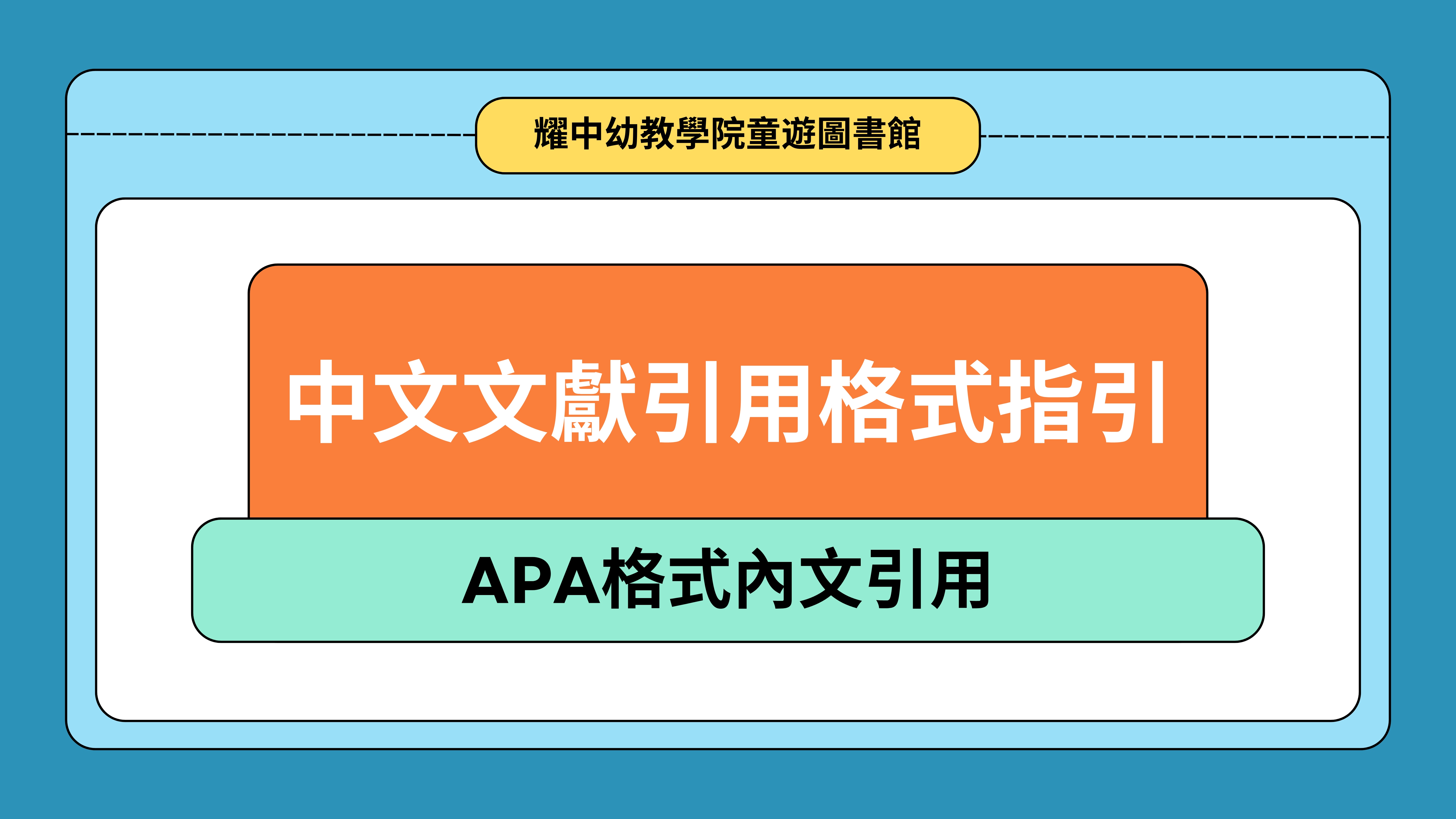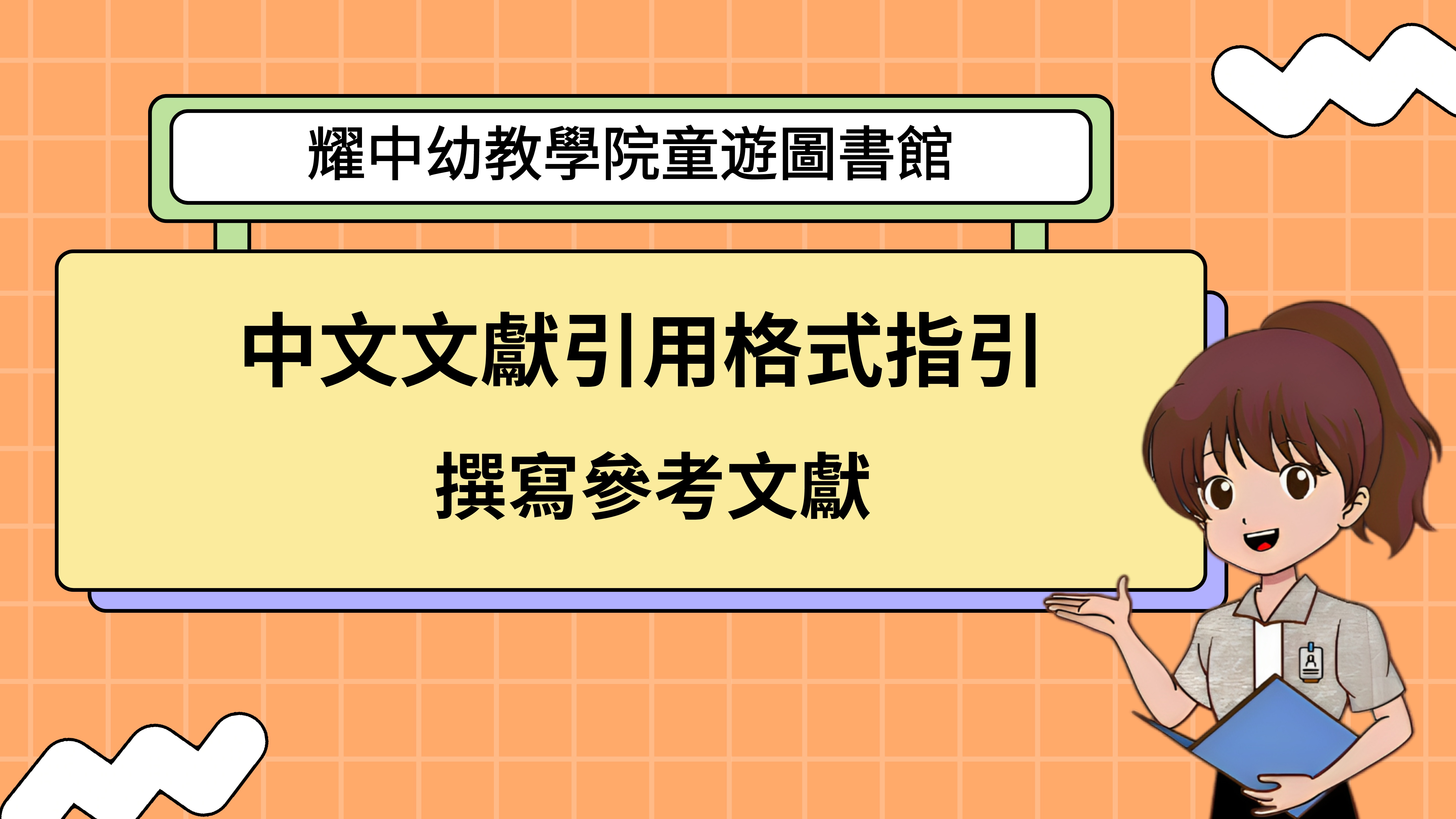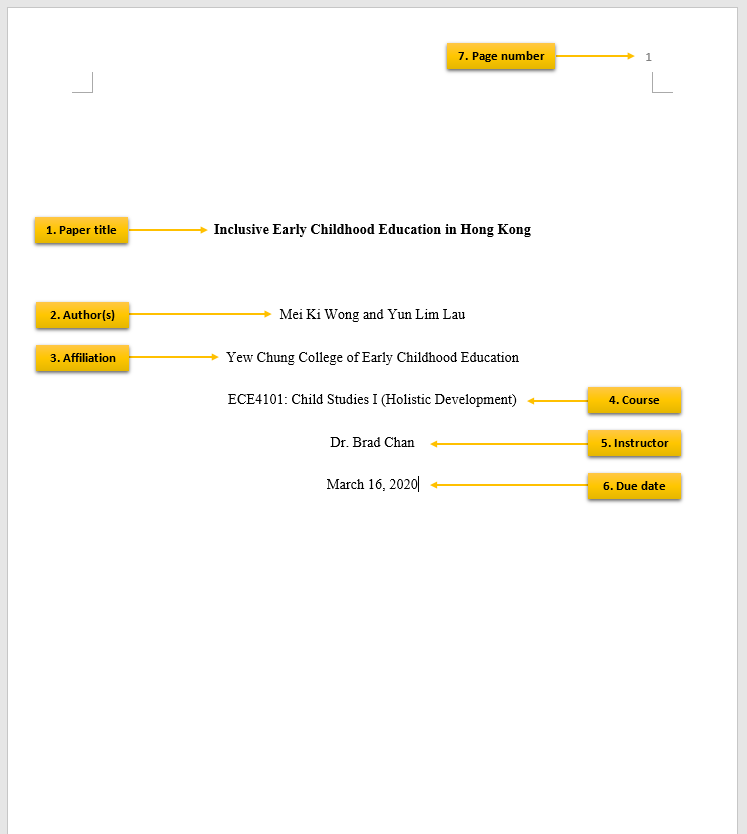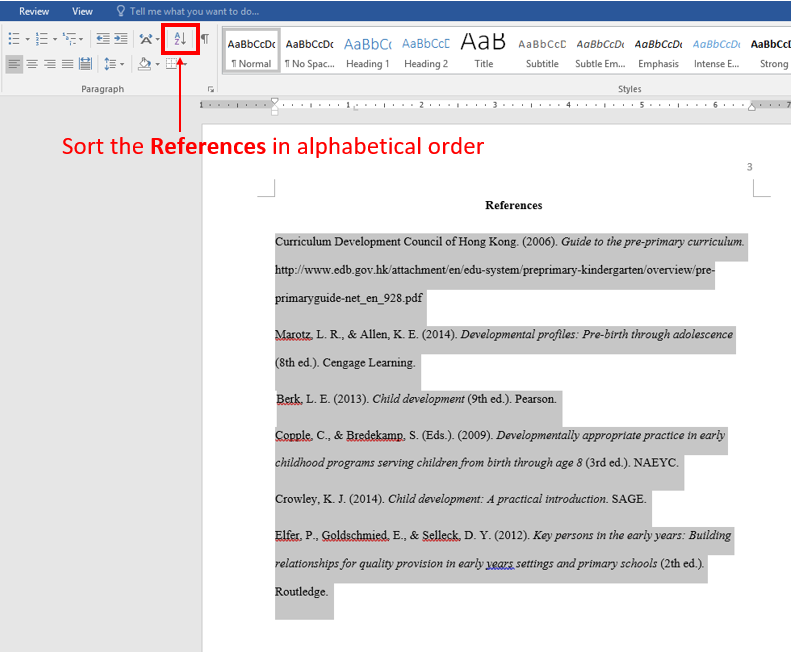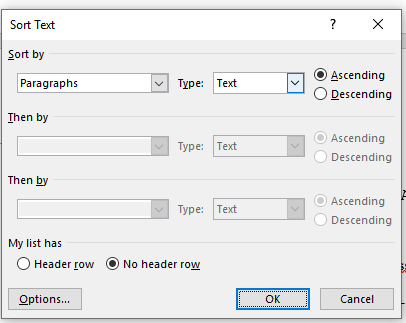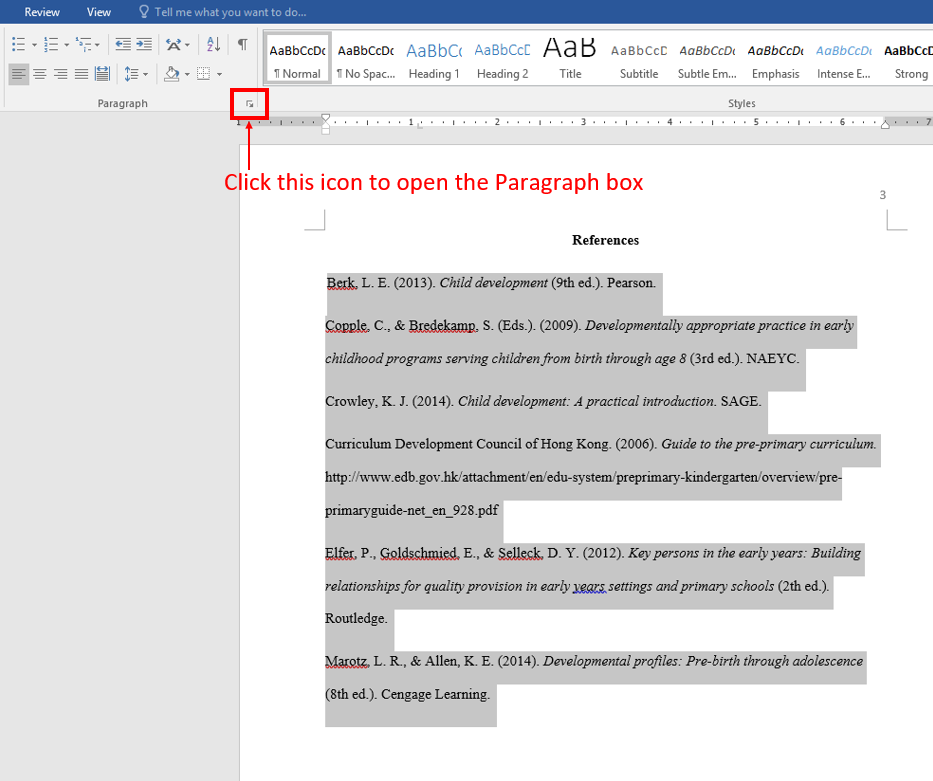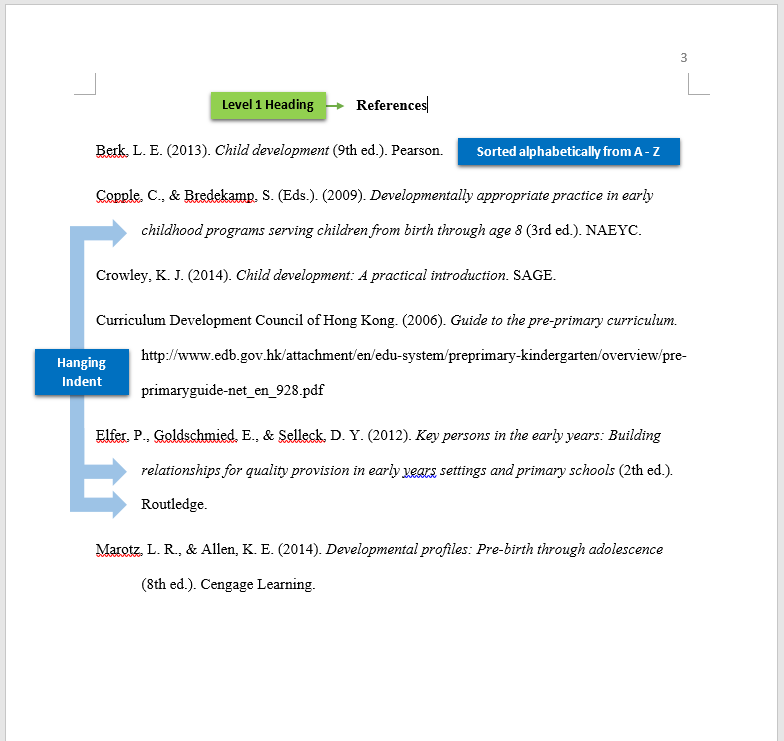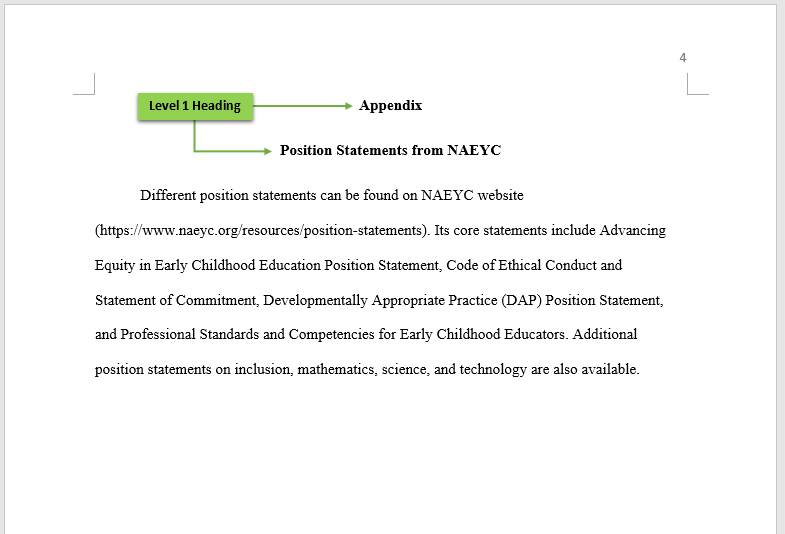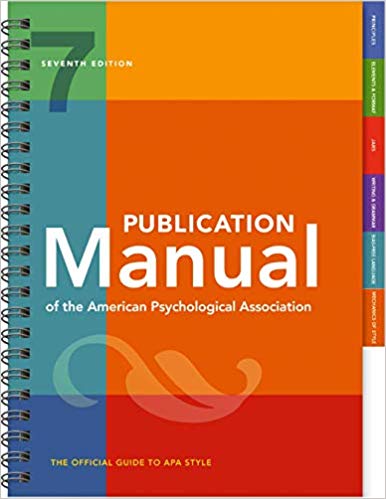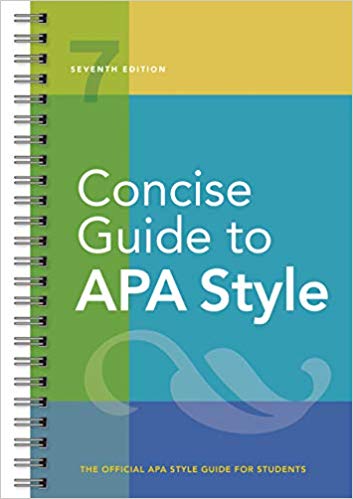Why do you need to use citation?
When you are writing your assignment or creating a presentation, you are likely to use existing works such as research articles, online images, YouTube videos. By citing the source of the work you have used, you avoid plagiarism which is a serious offence and could lead to academic and legal consequences. Plagiarism is "the act of presenting the words, ideas, or images of another as your own" (APA, 2020, p. 254).
Learn more about plagiarism here.
Need help?
If you are not sure whether you are citing a work correctly, please feel free to contact us.
» Citation Guide
Download citation guide (from 22nd Sep 2025 workshop)
Download Chinese citation guide (Full Version) (from 4th Jan 2024 workshop)
Download Chinese citation guide (Summary) (from 18th Mar 2025 workshop)
Quick reference guide: Common reference types (click here)
This guide is created based on the official APA manual:
American Psychological Association. (2020). Publication manual of the American Psychological Association (7th ed.).
Major differences between the APA 6th and APA 7th edition can be found in here.
» Video Guide
» In-text Citation
An in-text citation is to provide the information of a work you have used in your paper where its ideas, theories, or research have directly influenced your work. In APA, in-text citation uses the author-date format where the author's last name and the year of the publication are provided. The in-text citation corresponds with the References list, where the list would provide detail information of the cited work to facilitate retrieval.
Based on the number and type of authors, the in-text citation is written as followed:
| No. of Authors | Parenthetical citation | Narrative citation |
| One author | (Luna, 2020) | Luna (2020) |
| Two authors | (Salas & D'Agostino, 2020) | Salas and D'Agostino (2020) |
| Three or more authors | (Martin et al., 2020) | Martin et al. (2020) |
| Group author with abbreviation (1st citation) | (National Institute of Mental Health [NIMH], 2020) | National Institute of Mental Health (NIMH, 2020) |
| Group author with abbreviation (subsequent citations) | (NIMH, 2020) | NIMH (2020) |
| Group author without abbreviation | (Standard University, 2020) | Standard University (2020) |
Note. Adapted from Publication Manual of the American Psychological Association (7th ed., p. 266) by American Psychological Association, 2019, American Psychological Association. Copyright 2019 by the American Psychological Association.
Multiple In-text Citations
If you are using more than one reference to illustrate a point at once, you can combine the in-text citations using a semi-colon and put them in alphabetical order by the author's last name.
For example, this in-text citation combined three works together: (Luna, 2020; Martin et al., 2003; Salas & D'agostino, 2019) / Luna (2020), Martin et al. (2003), and Sales and D'agostino (2019).
Chinese Materials In-text Citation
There is no standard style for Chinese materials citation. It simply references the APA style. Below is a summary of basic Chinese in-text citations:
| No. of Authors | Parenthetical citation | Narrative citation |
| One author | (黃麗莉,1996) | 黃麗莉(1996) |
| Two authors | (楊國樞、葉光輝,1991) | 江光榮、靳嶽濱(2001) |
| Three or more authors | (余振等,1993) | 余振等(1993) |
| Group author | (世界衛生組織,2020) | 世界衛生組織(2020) |
» Reference List (with examples)
Common Categories (More categories are available in the APA 7th Manual, see the last section "APA 7th Guide").
Book
Author, A. A. (Date). Title of book: Subtitle (edition). Publisher. DOI
Author, A. A.Author's Last name, First name initial. Middle name initial.
(Date).
The year the book is published in parentheses ( ). Put a full-stop at the end.
Title of book: Subtitle
Use sentence case for the title and subtitle (capitalizing the first word in the Title and Subtitle) and make them Italic. If there is no edition, put a full-stop at the end of the title.
(edition).
Only add edition information when it is the 2nd edition or above. E.g. (2nd ed.).
Publisher.
Name of the publisher. Put a full-stop at the end of the name. DOI
DOI stands for Digital Object Identifier, a unique string of numbers and characters to locate the book. If the book has a DOI (which looks like this: 10.1080/xxxxxx), put it at the end of the reference entry in URL format (http://doi.org/ + the DOI). Do not put a full-stop at the end of the DOI. If there is no DOI associated with the book, simply omit it.
Examples
Berk, L. E. (2013). Child development (9th ed.). Pearson.
In-text citation: Berk (2013) / (Berk, 2013)
James, C., Cameron, P. D., Smith, Y. N., Hawthorne, H., & Cushing, S., M. (2005). The sociological theory of people and places. Oxford University Press.
In-text citation: James et al. (2013) / (James et al., 2013)
Marotz, L. R., & Allen, K. E. (2014). Developmental profiles: Pre-birth through adolescence (8th ed.). Cengage Learning.
In-text citation: Marotz and Allen (2014) / (Marotz & Allen, 2014)
Book Chapter (in an Edited Book)
Author, A. A. (Date). Title of chapter. In E. E. Editor & E. E. Editor (Eds.), Title of book: Subtitle (edition, page numbers). Publisher. DOI
Author, A. A.
Author's Last name, First name initial. Middle name initial.
(Date).
The year the book is published in parentheses ( ). Put a full-stop at the end.
Title of chapter: Subtitle.
Use sentence case for the title and subtitle (capitalizing the first word in the Title and Subtitle).
In E. E. Editor (Ed.),
Editor(s)'s First name initial, Middle name initial. and the Last name. Use (Ed.) to indicate they are the editors of the book. Note that there is a comma after (Ed.),. If there is only one editor, use (Ed.), if there are two editors or more, use (Eds.),
Title of book: Subtitle
Use sentence case for the title and subtitle (capitalizing the first word in the Title and Subtitle) and make them Italic.
(edition, page numbers).
Only add the edition information when it is the 2nd edition or above, and add the page numbers of the chapter in pp. xx-xx format. The edition information and the page numbers are in parentheses ( ) after the book title. Put a full-stop at the end of the parentheses.
Publisher.
Name of the publisher. Put a full-stop at the end of the name.
DOI
DOI stands for Digital Object Identifier, a unique string of numbers and characters to locate the book. If the book has a DOI (which looks like this: 10.1080/xxxxxx), put it at the end of the reference entry in URL format (http://doi.org/ + the DOI). Do not put a full-stop at the end of the DOI. If there is no DOI associated with the book, simply omit it.
Examples
Abecedarian project. (2016). In D. Couchenour & J. K. Chrisman (Eds.), The Sage encyclopedia of contemporary early childhood education (Vol. 1, pp. 1-13). Sage.
In-text citation: Abecedarian project (2016) / (Abecedarian project, 2016)
Weinstock, R., Leong, G. B., & Silva, J. A. (2003). Defining forensic psychiatry: Roles and responsibilities. In R. Rosner (Ed.), Principles and practice of forensic psychaitry (2nd ed., pp. 7-13). CRC Press.
In-text citation: Weinstock et al. (2003) / (Weinstock et al., 2003)
Yuen, G. (2010). The displaced early childhood education in the postcolonial era of Hong Kong. In N. Yelland (Ed.), Contemporary perspectives on early childhood education (pp. 83-99). Open University Press.
In-text citation: Yuen (2010) / (Yuen, 2010)
Journal Article
Author, A. A. (Date). Title of article: Subtitle. Name of Journal, volume(issue), page numbers. DOI
Author, A. A.
Author's Last name, First name initial. Middle name initial.
(Date).
The year the article is published in parentheses ( ). Put a full-stop at the end.
Title of article: Subtitle.
Use sentence case for the title and subtitle (capitalizing the first word in the Title and Subtitle).
Name of Journal,
Use title case for the journal-title and make it italic. Put a comma at the end of the name.
volume(issue),
Italicize the journal volume, followed by the issue number in parentheses and leaves no space between the volume number and the parentheses ( ). Put a comma at the end of the issue (or the volume number if there is no issue).
page numbers.
Add the page numbers of the article in xx-xx format. Put a full-stop at the end. (Note that for a book chapter, you will need to use "pp." before indicating the page numbers, but "pp." is not needed for journal articles' page numbers)
DOI
DOI stands for Digital Object Identifier, a unique string of numbers and characters to locate the article. If the article has a DOI (which looks like this: 10.1080/xxxxxx), put it at the end of the reference entry in URL format (http://doi.org/ + the DOI). Do not put a full-stop at the end of the DOI. If there is no DOI associated with the article, simply omit it.
Examples
Cheng, M., & Yuen, H. K. (2018). Student continuance of learning management system use: A longitudinal exploration. Computers & Education, 120, 241-253.
In-text citation: Cheng and Yuen (2018) / (Cheng & Yuen, 2018)
De Cries, R., Nieuwenhuijze, M., Buitendijk, S. E., & the members of Midwifery Science Work Group. (2013). What does it take to have a strong and independent profession of midwifery? Lessons from the Netherlands. Miwifery, 29(10), 1122-1128. https://doi.org/10.1016/j.midw.2013.07.007
In-text citation: De Cries et al. (2013) / (De Cries et al., 2013)
Thornton, C., & Underwood, K. (2013). Conceptualisations of disability and inclusion: Perspectives of educators of young children. Early Years: An International Research Journal, 33(1), 59-73. http://doi.org/10.1080/09575146.2012.682975
In-text citation: Thornton and Underwood (2013) / (Thornton & Underwood, 2013)
Webpages and Websites
- Only use the webpages and websites category if no other reference category that better fits the work.
- Ask yourself: What type of work is on the website?
- Pay attention to the term "website" that it is not referring to the form of retrieval e.g. an online government report;
- Rather, it is referring to the type of work. For example, for an online government report, use the report category instead.
- Webpages and websites are for works without a parent publication such as blog posts, BBC news articles.
- For an online news source like the BBC News, CNN, ABC News, uses the website category.
- Do not use the website category for Online Newspaper Article such as SCMP, The Washington Post, The New York Times, which has a print version available. Use the newspaper article category instead.
General mention of a website does not require a reference entry
For a general mention of a website in which you are not referring to particular information or a specific page, no reference entry is needed. Simply provide the name of the website in your paragraph and include the URL in parentheses. For examples: We created our survey using Qualtrics (https://www.qualtrics.com) OR The information on the National Association for the Education of Young Children (https://www.naeyc.org/) is useful for parents.
Here are two common types of webpages and websites references:
1) Author, A. A. (Date). Title of work: Subtitle. Site Name. URL/Retrieval Date
2) Site Name. (Date). Title of work: Subtitle. URL
Author, A. A. / Site Name.
Author's Last name, First name initial. Middle name initial. If the webpage or website has no author, use the Site Name as the author.
(Date).
Provide the year, month and date of the work if available in parentheses. E.g. (2019, January 3), (2019, January), or simply (2019). If there is no date, use (n.d.). Put a full-stop at the end.
Title of work: Subtitle.
Use sentence case for the title and subtitle (capitalizing the first word in the Title and Subtitle) and make them Italic. Pull a full-stop at the end of the title.
Site Name.
If the work has an author, you need to include the name of the website in title case. Put a full-stop at the end of the name. If the site name is the same as the author, you do not need to include the site name here.
URL / Retrieval Date
Provide the URL of the work. Do not put a full-stop at the end of the URL. The retrieval date style of URL is only needed when the contents of the page are designated to change over time (see the 3rd example below)
Examples
Avramova, N. (2019, January 3). The secret to a long, happy, healthy life? Think age-positive. CNN. https://edition.cnn.com/2019/01/03/health/respect-toward-elderly-leads-to-long-life-intl/index.html
In-text citation: Avramova (2019) / (Avramova, 2019)
U.S. Census Bureau. (n.d.). U.S. and world population clock. U.S. Department of Commerce. Retrieved July 3, 2019, from https://www.census.gov/popclock/
In-text citation: U.S. Census Bureau (n.d.) / (U.S. Census Bureau, n.d.)
World Health Organization. (2019, August 26). Questions and answers on immunization and vaccine safety. https://www.who.int/features/qa/84/en
First in-text citation: World Health Organization (WHO, 2019) / (World Health Organization [WHO], 2019)
Subsequent citation: WHO (2019) / (WHO, 2019)
Newspaper Article
Author, A. A. (Date). Title of work: Subtitle. Name of Newspaper. URL/Section in the Print Newspaper
Author, A. A.
Author's Last name, First name initial. Middle name initial.
(Date).
Provide the year, month and date of the work if available in parentheses ( ). E.g. (2019, January 3), (2019, January), or simply (2019). If there is no date, use (n.d.). Put a full-stop at the end.
Title of work: Subtitle.
Use sentence case for the title and subtitle (capitalizing the first word in the Title and Subtitle). Pull a full-stop at the end of the title.
Name of Newspaper.
Use title case for the newspaper name and make it italic. Put a full-stop at the end of the name. If you are using a print newspaper, put a comma at the end instead.
URL / Section in the Print Newspaper
Provide the URL of the work. Do not put a full-stop at the end of the URL. If you are using a print newspaper, put down the section of the article with a full-stop at the end.
Examples
Chen, L. (2019, June 11). Senior Chinese law researcher target of PhD plagiarism claims. South China Morning Post. https://www.scmp.com/news/china/society/article/3014001/senior-chinese-law-researcher-target-phd-plagiarism-claims
In-text citation: Chen (2019) / (Chen, 2019)
Hess, A. (2019, January 3). Cats who take direction. The New York Times, C1.
In-text citation: Hess (2019) / (Hess, 2019)
Video
Author, A. A. (Author Role). (Date). Title of work: Subtitle [Media type]. Publisher. URL
Author, A. A.
Author's Last name, First name initial. Middle name initial.
| Common Type of Media | Author Role |
| Film | Director |
| TV series | Executive producer(s) |
| Webinar | Instructor |
| Online streaming video (e.g. YouTube) | No indication of role required. But if both the author's username and real name are known, provide the real name of the individual or group as the author, followed by the username in square brackets [ ]. See the 2nd example below. |
(Date).
Provide the year, month and date of the work if available in parentheses ( ). E.g. (2019, January 3), (2019, January), or simply (2019). If there is no date, use (n.d.). Put a full-stop at the end.
Title of work: Subtitle.
Use sentence case for the title and subtitle (capitalizing the first word in the Title and Subtitle) and make them italic.
[Media type].
Indicate the type of media of the work in square brackets [ ]. Put a full-stop at the end of the brackets. It is not necessary to specify the format of the work e.g. DVD, but you can include the information if you wish. Here are some common types of media:
- Film
- TV series
- Podcast
- Webinar
- Online streaming video
Publisher.
Name of the publisher or the production company. If there are more than one companies, separate them using a semi-colon. Put a full-stop at the end of the name.
URL
Provide the URL of the work. Do not put a full-stop at the end of the URL. If you are using a DVD film, simply omit the URL.
Examples
Berlowitz, V. (Director). (2012). Frozen planet [Film]. BBC Worldwide Limited.
In-text citation: Berlowitz (2012) / (Berlowitz, 2012)
Fogarty, M. [Grammar Girl]. (2016, September 30). How to diagram a sentence (absolute basics) [Video]. YouTube. https://www.youtube.com/watch?v=deiEY5Yq1qI
In-text citation: Fogarty (2015) / (Fogarty, 2015)
NAEYC. (2017). Webinar: Back to school-making and tinkering with STEAM [Webinar]. YouTube. https://www.youtube.com/watch?v=M67tDikVU6Q
In-text citation: NAEYC (2017) / (NAEYC, 2017)
Music Album
Similar to the book and book chapter categories, a whole music album and a single track in the album are cited differently.
For a classical work recorded by another artist
- Author: Provide the composer as the author and provide the recording artist in square brackets [ ] after the title of the work.
- Date: Use the publication date of the version you used, provide the year of original composition in parenthesis ( ) at the end of the reference.
For other recordings
- Author: Provide the name of the recording artist or group as the author.
Author, A. A. (Date). Title of album: Subtitle [Album + Recording information]. Publisher. (Original work published + Date)
Author, A. A. / Site Name.
Author's Last name, First name initial. Middle name initial.
(Date).
Provide the publication year of the album (not the year of original composition).
Title of album: Subtitle.
Use sentence case for the title and subtitle (capitalizing the first word in the Title and Subtitle) and make them Italic. Do not put a full-stop at the end.
[Album + Recording information].
Provide the description of the work i.e. [Album]. If the album is recorded by another artist different than the author, include the name of the individual or group who recorded the version you used after the description of work e.g. [Album recorded by Rob Porter], [Album recorded by Yellow Frog Media].
Publisher.
Provide the publication year of the album (not the year of original composition) in parentheses ( ). Pull a full-stop at the end.
(Original work published + Date)
Provide the year of original composition statement in parentheses ( ). Do not add a full-stop at the end. If the author is the original composer of the album, simply omit this part.
Examples
Bach, J. S. (2010). The Brandenburg concertos: Concertos BWV 1043 & 1060 [Album recorded by Academy of St Martin in the Fields]. Decca. (Original work published 1721)
In-text citation: Bach (1721/2010) / (Bach, 1721/2010)
Bowie, D. (2016). Blackstar [Album]. Columbia.
In-text citation: Bowie (2016) / (Bowie, 2016)
Single Song / Track
Author, A. A. (Date). Title of song: Subtitle [Song + Recording information]. On Title of album: Subtitle. Publisher. (Original work published + Date)
Author, A. A. / Site Name.
Author's Last name, First name initial. Middle name initial. If the webpage or website has no author, use the Site Name as the author.
(Date).
Provide the publication year of the song (not the year of original composition) in parentheses ( ). Pull a full-stop at the end.
Title of song: Subtitle.
Use sentence case for the title and subtitle (capitalizing the first word in the Title and Subtitle). Do not put a full-stop at the end.
[Song+ Recording information].
Provide the description of the work i.e. [Song]. If the song is recorded by another artist different than the author, include the name of the individual or group who recorded the version you used after the description of work e.g. [Song recorded by Rob Porter], [Song recorded by Yellow Frog Media].
On Title of album: Subtitle.
Use sentence case for the title and subtitle (capitalizing the first word in the Title and Subtitle) and make the album title italic. Put a full-stop at the end of the title. If the song has no associated album, simply omit this part.
Publisher.
Name of the publisher. Put a full-stop at the end of the name.
(Original work published + Date)
Provide the year of original composition statement in parentheses ( ). Do not add a full-stop at the end. If the author is the original composer of the song, simply omit this part.
Examples
Beethoven, L. van. (2012). Symphony No. 3 in E-flat major [Song recorded by Staatskapelle Dresden]. On Beethoven: Completer symphonies. Brilliant Classics. (Original work published 1804)
In-text citation: Beethoven (1804/2012) / (Beethoven, 1804/2012)
Brahms, J. (2002). Lullaby [Song recorded by SPJ Music, Inc.]. On 25 Tranquil classics. SPJ Music, Inc. (Original work published 1868).
In-text citation: Brahms (1868/2002) / (Brahms, 1868/2002)
Childish Gambino. (2018). This is American [Song]. mcDJ; RCA.
In-text citation: Childish Gambino (2018) / (Childish Gambino, 2018)
Turner, A. (2013). Do I wanna know? [Song recorded by Artic Monkeys]. On AM. Domino Records.
In-text citation: Turner (2013) / (Turner, 2013)
Clip Art / Stock Image / Photograph
Author, A. A. (Date). Title of image: Subtitle [Description]. Publisher. URL
Author, A. A. / Site Name.
Author's Last name, First name initial. Middle name initial. If the image has no author, use the site name as the author.
(Date).
Provide the posted year of the image in parentheses ( ). Pull a full-stop at the end.
Title of image: Subtitle.
Use sentence case for the title and subtitle (capitalizing the first word in the Title and Subtitle) and make them italic. Do not put a full-stop at the end. If there is no title for the image, create a title in square brackets [ ] instead (see example below).
[Description].
Provide the description of the work in square brackets [ ] e.g. [Clip art], [Stock image], [Photograph]. Put a full-stop at the end.
Publisher.
Name of the publisher or the name of the clip art or stock image website. Put a full-stop at the end of the name.
URL
Provide the URL of the work. Do not put a full-stop at the end of the URL.
Examples
GDJ. (2018). Neural network deep learning prismatic [Clip art]. Openclipart. https://openclipart.org/detail/309343/neural-network-deep-learning-prismatic
In-text citation: GDJ (2018) / (GDJ, 2018)
McCurry, S. (1985). Afghan girl [Photograph]. National Geographic. https://www.nationalgeographic.com/magazine/national-geographic-magazine-50-years-of-covers/#/ngm-1985-jun-714.jpg
In-text citation: McCurry (1985) / (McCurry, 1985)
Pexels. (2010). Sunglasses people water blue [Stock image]. Pixabay. https://pixabay.com/photos/sunglasses-people-water-blue-1284419/
In-text citation: Pexels (2010) / (Pexels, 2010)
PowerPoint Slides / Lecture Notes
Author, A. A. (Date). Title of presentation: Subtitle [Description]. Publisher. URL
Author, A. A.
Author's Last name, First name initial. Middle name initial. Use the name of the instructor or presenter.
(Date).
Provide the date of the presentation or lecture in parentheses ( ). Pull a full-stop at the end.
Title of presentation: Subtitle.
Use sentence case for the title and subtitle (capitalizing the first word in the Title and Subtitle) and make them italic. Do not put a full-stop at the end. If there is no title for the image, create a title in square brackets [ ] instead.
[Description].
Provide the description of the work in square brackets [ ] e.g. [PowerPoint slides], [Lecturer notes]. Put a full-stop at the end.
Publisher.
Name of the publisher of the presentation. If the slides or notes come from a classroom website e.g. Moodle, and you are writing to an audience that have access to the website resource, provide the name of the site and its URL (see examples below). (APA, 2020, p. 347) Put a full-stop at the end of the publisher.
URL
Provide the URL of the work. As mentioned, if the slides or notes come from a classroom website e.g. Moodle, and you are writing to an audience that have access to the website resource, provide the login page URL. (APA, 2020, p. 347) Do not put a full-stop at the end of the URL.
Examples
Canan, E., & Vasilev, J. (2019, May 22). [Lecture notes on resource allocation]. Department of Management Control and Information Systems, University of Chile. https://uchilefau.academia.edu/ElseZCanan
In-text citation: Canan and Vasilev (2019) / (Canan & Vasilev, 2019)
Housand, B. (2016). Game on! Integrating games and simulations in the classroom [PowerPoint slides]. SlideShare. https://www.slideshare.net/brainhousand/game-on-iagc-2016/
In-text citation: Housand (2016) / (Housand, 2016)
Mack, R., & Spake, G. (2018). Citing open source images and formatting references for presentation [PowerPoint slides]. Canvas@FNU. https://fnu.onelogin.com/login
In-text citation: Mack and Spake (2018) / (Mack & Spake, 2018)
Social Media Posts: Facebook / Tweet / Instagram
This category is for original social media site content. If you are citing an online newspaper article found via Facebook, cite the work as a newspaper article instead.
Author, A. A. [@username]. (Date). Title of post [Description]. Social Media Site Name. URL
Author, A. A.
Author's Last name, First name initial. Middle name initial.
[@username].
This is for Twitter's Tweet and Instagram posts. Provide the username of the social media account in square brackets [ ]. Pull a full-stop at the end.
(Date).
Provide the date of the post in parentheses ( ). Pull a full-stop at the end.
Title of post
Provide the title according to the post, follow the original capitalization and make them italic. Do not put a full-stop at the end. Social media posts might contain nonstandard spelling and capitalization, hashtags, links, and emojis. Keep these information as appeared on the title. If you are not able to replicate the emojis, provide the emoji's name in a square brackets [ ]. E.g. [face with sunglasses emoji] for ![]() .
.
[Description].
Provide the description of the work in square brackets [ ] e.g. [Tweet], [Facebook page], [Photograph], [Infographic], [Status update]. Put a full-stop at the end.
Social Media Site Name.
Name of the social media site. Put a full-stop at the end of the name.
URL
Provide the URL of the work. Do not put a full-stop at the end of the URL.
Examples
Facebook Post
National Association for the Education of Young Children. (2020, February 29). Don’t miss your chance to vote in NAEYC's 2020 Governing Board Election! Voting closes this Sunday, March 1! [Image attached] [Status update]. Facebook. https://www.facebook.com/NAEYC/posts/10157996775367429
Note: If the status update includes images, videos, thumbnail links to outside sources, indicate that in square brackets.
In-text citation: National Association for the Education of Young Children (2020) / (National Association for the Education of Young Children, 2020)
National Institute of Mental Health. (2018, November 28). Suicide affects all ages, genders, races, and ethnicities. Check out these 5 Action Steps for Helping Some-one in Emotional Pain [Infographic]. Facebook. http://bit.ly/321Qstq
In-text citation: News From Science (2018) / (News From Science, 2018)
News From Science. (2018, June 26). These frogs walk instead of hop: https://scim.ag/2KlriwH [Video]. Facebook. https://facebook.com/ScienceNOW/videos/10155508587605108
In-text citation: News From Science (2018) / (News From Science, 2018)
Tweet
White, B. [@BettyMWhite]. (2018, June 21). I treasure every minute we spent together #koko [Image attached] [Tweet]. Twitter. https://twitter.com/BettyMWhite/status/1009951892846227456
Note: If the tweet includes images, gifs, videos to outside sources, indicate that in square brackets.
In-text citation: White (2018) / (White, 2018)
Zero to Three [@ZEROTOTHREE]. (2020, March 10). After 3 years of hard work, it was amazing to witness the 15 members of the #PowerToTheProfession Task Force present the Unifying Framework [Image attached] [Tweet]. Twitter. https://twitter.com/ZEROTOTHREE/status/1237153546816102401
In-text citation: Zero to Three (2020) / (Zero to Three, 2020)
Instagram photo
YCCECE Library [@yccecelib]. (2020, February 7). With face-to-face classes cancelled, you can access the Library e-resources from home http://t.ly/O3M8D #homestudying #elearning #electronicresources [Image]. https://www.instagram.com/p/B8QWmsVF1E9/?utm_source=ig_web_copy_link
In-text citation: YCCECE Library (2020) / (YCCECE Library, 2020)
Zeitz MOCAA [@zeitzmocaa]. (2018, November 26). Grade 6 learners from Parkfields Primary School in Hanover ark visited the museum for a tour and workshop hosted by [Photographs]. Instagram. https://www.instagram.com/p/BqpHpjFBs3b/
In-text citation: Zeitz MOCAA (2018) / (Zeitz MOCAA, 2018)
Chinese Materials
There is no standardized Chinese citation style. The key is to be consistent when you create references. Please check with your lecturer which style is preferred for Chinese materials citation. Here are some ways to cite Chinese language materials:
期刊(包括學報、雜誌、通訊等):
作者一、作者二、作者三(年分)。〈文章題目〉。《期刊名稱》,第 xx 卷第 x 期,頁 xx–xx。
例子一:李曉康(2000)。〈「公平、公正、公開」的大學評估?〉。《大學道》,第 2 期,頁 2–3。
例子二:黃繼仁、周立勳、甄曉蘭(2001)。〈國小教師國語教學信念及相關因素之調查研究〉。《教育研究集刊》,第 47 輯,頁 107–132。
非期刊(包括書本、報告、手冊等)/非期刊的一部分:
作者一(年分)。《書本/報告名稱》。出版地:出版者。
例子: 何瑞珠(2000)。《家長參與教育的空間》。香港:香港教育研究所。
編者一、編者二(編)(年分)。《書本/報告名稱》。出版地:出版者。
例子: 曾文星(主編)(1996)。《華人的心理與治療》。台北,台灣:桂冠圖書。
作者一、作者二、作者三(年分)。〈文章名稱〉。載編者一、編者二(編),《書本/報告名稱》(頁 xx–xx)。出版地:出版者。
例子: 嚴和駿(1996)。〈中國人的心理治療:從傳統觀念談到心理治療的發展〉。載曾文星(主編),《華人的心理與治療》(頁 437–448)。台北,台灣:桂冠圖書。
網上文獻/期刊中文獻:
作者一、作者二(年分)。〈文獻題目〉。擷取自網頁〔完整、能直接開啟文章之網址〕
例子: 廖迪生( 2003 )。〈我從夜校出來〉。擷取自網頁http://www.hkedcity.net/article/nightschool/030430-005/
網上期刊:
作者一、作者二、作者三(年分)。〈文章題目〉。《期刊名稱》,第 xx 卷第 x 期,頁 xx–xx。擷取自網頁〔完整、能直接開啟文章之網址〕
例子: 涂巧玲、楊宜興(2003)。〈以專家判斷法決定國民小學教育經費充足 ─ 一個方法的試探〉。《教育研究集刊》,第 49 輯 第 2 期,頁 1–27 。擷取自網頁http://www.edujournal.com.tw/bulletin/4902/001.pdf
Other Libraries' Resources on Chinese Citation Styles (引證中文資料)
» Construct & Format Your Paper
Basic Document Set-up
| Font Family & Size |
Use the same font throughout the paper
|
| Line spacing | Double-space or 2.0 |
| Margin | Default Microsoft Word margin or at least 2.54 cm at the top, bottom, left, and right of every page |
| Paragraph Alignment | Left-align (DO NOT use full justification or text justified) |
| Paragraph Indentation | Indent the first line of every paragraph 0.5 in. |
| Page number | On the top right corner |
(APA, 2020, p. 43)
Here is a video on how to format a student paper in APA 7th style with Microsoft Word:
Student Paper Required Elements
(A) Title Page
Title page
The title page consists of:
- Paper Title - In title case, bold and centered. Positioned in the upper half of the title page (e.g. three or four lines down from the top margin of the page).
- Author Name - Insert one blank double-spaced line between the paper title and the author name; the preferred form of an author's name is first-name, middle initial(s), last-name; centered.
- Two authors: write all names on the same line, and use "and" to separate the names. E.g. Peter Lau and Maggie Wong.
- Three of more authors: write all names on the same line, separate the names with comma "," and include "and" before the final author's name. E.g. Peter Lau, Maggie Wong, and Time Chau.
- Author Affiliation - Please put the College name i.e. Yew Chung College of Early Childhood Education
- Course Number & Name - Provide the assignment's course number and name.
- Instructor Name - Provide the name of the course instructor
- Assignment Due Date - Provide the due date of the assignment
- Page Number - Insert page number on the top right corner.
(APA, 2020, p. 30)
(B) Body
Body
The body may consist of:
- Paper title - Provide the title on the first line of the first page in the body. The title should be in title case, bold and centered.
- Paragraph - Left-aligned, double-spaced, with the first line of each paragraph indented by one tab key.
- In-text Citation - See the section "In-text Citation" above.
- Headings - Use headings as needed to organize your paper into different sections. DO NOT start the section in a new page or add any line breaks and space in between sections. Each section should follow the next without a break. See the 5 levels of headings below and how to format them. You can also check out this sample paper.
| Heading | Formatting |
| Level 1 | Centered, Bold, Title Case Heading (i.e. The Paper Title)
Start the paragraph here. |
| Level 2 | Left-aligned, Bold, Title Case Heading
Start the paragraph here. |
| Level 3 | Left-aligned, Bold and Italic, Title Case Heading
Start the paragraph here. |
| Level 4 | Indented, Bold, Title Case Heading, End with a Full-stop. Start the paragraph on the same line as the heading and continues as a regular paragraph. |
| Level 5 | Indented, Bold and Italic, Title Case Heading, End with a Full-stop. Start the paragraph on the same line as the heading and continues as a regular paragraph. |
(APA, 2020, p. 47)
(C) Reference List
Reference List
After completing your paper, it's time to create and tidy up the reference list (see also the section "Reference List (with examples)" on creating a reference for different types of work).
- Begin the reference list on a new page
- Use the title "References" with Level 1 Heading
- Sort each reference entry in alphabetical order by the first author's last name
- Use Double-space
- Use Hanging indent format for each reference entry (Opposite to a paragraph, hanging indent indents the second line onwards of a reference entry)
How to Sort References & Set Hanging Indent in Microsoft Word?
Step 1: Select all of the references and click the Sort button on the Home tab
Simply click OK to the default sorting option.
Now the list is in alphabetical order, let's move on to applying the Hanging Indent format.
Step 2: Open the Paragraph box by clicking the arrow icon at the bottom-right corner in the Paragraph section.
Step 3: The paragraph box should now be popped out. Under Indentation > Special, choose "Hanging" and set the Hanging distance By: 1.27 cm or 0.5 in. Click OK.
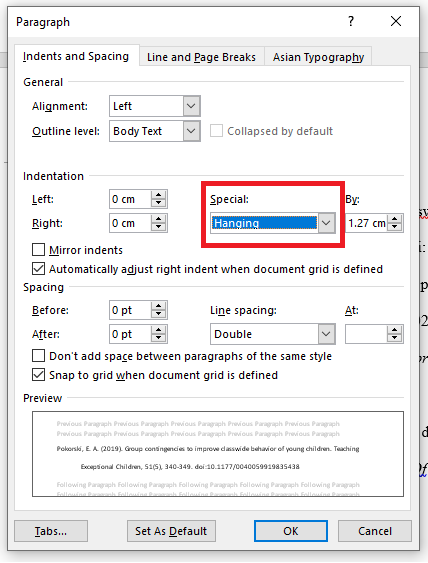
Step 4: Done! Your reference list is now sorted in alphabetical order and with hanging indentation applied.
(D) Appendices
Appendices
If there is a material that supplements the paper's content but may not be appropriate to be inserted in the body, such material can be included in an appendix. An appendix may consist of text, tables, figures, or a combination of these.
- Appendices are placed after References
- The appendix must be mentioned at least once in the body e.g. (see Appendix A)
- Begin each appendix on a new page
- Give each appendix a label and a title, use Level 1 Heading and place them in separate lines on the top of the page
- If there are more than one appendices, give each appendix a letter e.g. Appendix A, Appendix B
(APA, 2020, p. 41)
Sample Student Paper
Here are some sample student papers for your reference.
- American Psychological Association (APA): Click here
- APA (Sample paper in a word document): Click here to download
- YCCECE Library (sample paper from this guide): Click here
» APA 7th Guide
Manuals at the Kidsploration Library
|
|
Publication Manual of the American Psychological Association / by American Psychological Association Published by American Psychological Association Available in the Reference {REF} and General Collection {ENG} [Call number: BF 76.7 .P83 2020] |
|
|
Published by American Psychological Association Available in the Reference {REF} and General Collection {ENG} [Call number: BF 76.7 .C66 2020] |
APA Style: online guide
Online APA Resources


